Canadian weather uses Celsius when gauging the temperature. However, one must also consider the windchill or how strong the wind is. For example, if the temperature is -20°C with a strong wind, the weather may “feel like” -40°C. The wind chill can drop the temperature another 20 degrees. Newcomers must always look at both factors.
Winnipeg’s winter temperatures usually start in November, get the coldest in January and February, then slowly ease up over March into April. Some years will be milder than others, while some will be extremely cold. If lucky, there will be only a handful of days near -40°C, while there are several weeks at these temperatures for some years.
Types Of Winter Clothing In Winnipeg
Not only will winter attire be based on temperature and windchill, but also on what the individual is doing and how long they are outside.
Usually, once the temperature hits freezing (0°C) is when it’s time to break out the winter clothing. Let’s go over different types of winter clothing, from head to toe.
Head
Toque
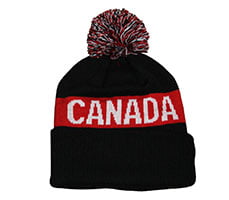
Known as a beanie in some countries, it is used to keep the head warm. Keeping the head warm is one of the essential pieces of winter clothing after a winter jacket.
| Temperature (In Celsius) | Outside under 10 mins | Outside over 10 mins |
|---|---|---|
| 0° to -10° | Optional | Recommended |
| -10° to -20° | Recommended | Necessary |
| Colder than -20° | Necessary | Necessary |
0 to – 10 under ten mins optional. Over ten minutes are necessary.
10 to -20 recommended. Over ten minutes necessary.
-20 and colder necessary necessary.
Scarf Or Neck Warmer
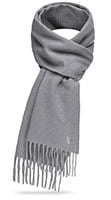
The colder it gets, the more it is felt around the neck. The neck is more sensitive to the cold than the face. A scarf wraps around the neck and is usually long enough to cover the face if needed.
| Temperature (In Celsius) | Outside under 10 mins | Outside over 10 mins |
|---|---|---|
| 0° to -10° | Optional | Recommended |
| -10° to -20° | Recommended | Necessary |
| Colder than -20° | Necessary | Necessary |
Balaclava
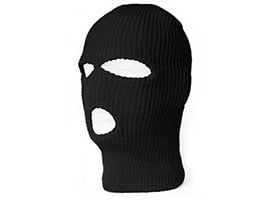
Used to cover the whole face and head, the balaclava is often used when it is extremely cold and/or windy. The balaclava is often used when being outside for longer periods of time.
| Temperature (In Celsius) | Outside under 10 mins | Outside over 10 mins |
|---|---|---|
| 0° to -10° | Optional | Optional |
| -10° to -20° | Optional | Recommended |
| Colder than -20° | Optional | Strongly Recommended |
Body
Winter Jacket
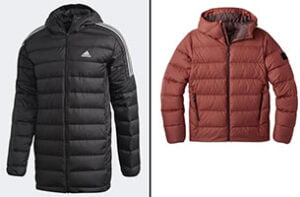
Jacket. The jacket is an essential piece of winter clothing. It helps keep your core body warm. There are two types of jackets, one that ends at the waist and one that goes down to the knees, which covers the butt. People will find the one that goes down to the knees will keep you warmer, but some find it uncomfortable. It is a personal preference.
Winter Jacket Costs?
The tricky question is, “how much do you spend on a winter jacket?” Many people spend $500+ on a winter jacket, which may seem ridiculous to some, while others couldn’t be happier with their purchase. With jackets, some prices are incredibly high due to brand name and fashion, but generally, you get what you pay for. Most jackets will have their “cold rating” listed on the tag. The lower the number, the better it will handle the cold. For example, rated for -30o.
Layering Your Winter Clothing
Another critical aspect of keeping warm in the extreme cold is layering. With layering, the warm air is contained between layers, but if you get too hot, it’s easy to remove a layer.
Where To Buy A Winter Jacket In Winnipeg?
The most crucial part of buying a winter jacket is determining your budget. If you’ve recently moved, you’ve probably already spent a lot of money, and finances are likely tight. If you’re arriving in Winnipeg in spring and missed the winter, often retailers will have discounts on winter clothing as they try to clear out their winter stock. This is a great time to buy winter clothing. As the clothing will be needed and used for years to come, there is nothing wrong with buying it in spring.
Winners – Winners has several locations in Winnipeg and is always a good place to check for clothing. They get quality name-brand clothing at discount prices. Their stock changes frequently, so you may need to visit occasionally to find the best deals.
Sportchek – A sports store with winter jackets and other vital winter clothing. They will often have discounts saving you between 25-50%; this is the best time to buy!
The Bay – Another large clothing store which also carries winter jackets. They also have sales which help make the jackets more affordable.
MEC – This store specializes in outdoor equipment and clothing. This is a great place to start if you have any questions or want the best options.
Mark’s – A large work clothing store that carries warm clothing for construction workers and other trades. You’ll find extremely warm jackets here as well as other attire.
Thrift Store and Value Village – These two stores will have slightly used winter jackets that fit all budgets. Even if you can’t find a high-quality jacket, you can improve it by wearing multiple layers. Just be on the lookout for rips or holes in the material.
Kijiji.ca and Facebook Marketplace – While the two above are physical store locations, Kijiji and Facebook Marketplace are only “buy and sells”. Here you will be able to find slightly used clothing at a fraction of the regular price.
Best Winter Jacket Brands?
There are several high-quality winter jacket brands. Some of them are:
- Columbia
- Northface
- Canada Goose
- Eddie Bauer
- Helly Hansen
| Temperature (In Celsius) | Outside under 10 mins | Outside over 10 mins |
|---|---|---|
| 0° to -10° | Recommended | Necessary |
| -10° to -20° | Necessary | Necessary |
| Colder than -20° | Necessary | Necessary |
Hands
Gloves
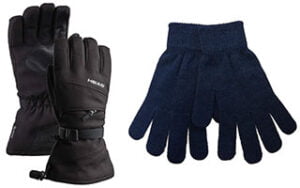
Fingers and toes are usually the first to freeze if not adequately covered. The fingers are susceptible to the cold. Usually, a cheap, light pair is enough to get around in the winter. However, a heavy-duty pair is recommended if you will be out in the cold for a long time. The cheaper pair will keep you warm in milder weather, but they usually won’t keep out the moisture if you get snow on your hands.
| Temperature (In Celsius) | Outside under 10 mins | Outside over 10 mins |
|---|---|---|
| 0° to -10° | Optional | Recommended |
| -10° to -20° | Necessary | Necessary |
| Colder than -20° | Necessary | Necessary |
Legs
There are three options for keeping the legs warm in winter. They are:
Warm Pants
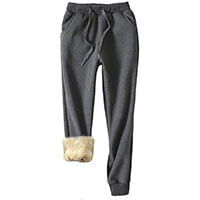
This is as simple as it sounds. The event, temperature and how long you will be outside should determine the type of pants you wear. Some pants material is thicker than others and blocks the winter better, while others are thin and let the wind through.
| Temperature (In Celsius) | Outside under 10 mins | Outside over 10 mins |
|---|---|---|
| 0° to -10° | Optional | Recommended |
| -10° to -20° | Optional | Recommended |
| Colder than -20° | Recommended | Necessary |
Long Underwear (Long Johns)

One of the most common winter clothing additions. The good thing about long underwear is that you can wear it under your regular pants, and no one will know. The downside is that it doesn’t block wind and moisture well. If you are in the snow or cold rain, it may eventually seep through your outer layer and soak into the long underwear, making you feel freezing cold.
| Temperature (In Celsius) | Outside under 10 mins | Outside over 10 mins |
|---|---|---|
| 0° to -10° | Unnecessary | Optional |
| -10° to -20° | Optional | Recommended |
| Colder than -20° | Optional | Necessary |
Ski Pants
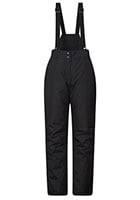
The ideal pants for long outdoors and extreme cold periods. They may not be the most fashionable, but they are usually well-insulated and block the wind and rain/snow. The downside is that they can be quickly bulky, and they make it more challenging to move around.
The last but equally as important are the feet. Feet are more challenging to keep warm; the more insulation you add to your feet, the more difficult it is to maneuver around. There’s a fine line between enough to keep warm and too much where you have problems walking.
| Temperature (In Celsius) | Outside under 10 mins | Outside over 10 mins |
|---|---|---|
| 0° to -10° | Unnecessary | Optional |
| -10° to -20° | Unnecessary | Optional |
| Colder than -20° | Optional | Recommended |
Feet
Boots
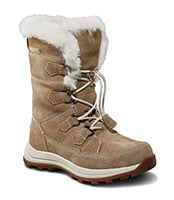
Winter boots serve two purposes: keep you warm and help you gain traction on slippery ground. Knowing that even the best winter boot will be useless on patches of pure ice is essential.
In many cases, in the winter, your regular footwear will be sufficient for getting around. Where you are going, whether it recently snowed and how long you’ll be outside will determine if you need warm boots or not.
If you’re travelling somewhere unfamiliar, it is a good idea to wear a pair of boots. You may be walking through uncleared snow.
If it is extremely cold, winter boots become automatic for some, no matter how long they are outdoors. And the longer you are outdoors, the more it makes sense to wear winter boots.
Boots are something you need to try on to make sure they fit physically. They have to be just the right size. If too small or too big, your feet may get colder quicker. Like jackets, heavy-duty winter boots also have temperature ratings. Unless you plan to spend a lot of time outdoors in the extreme cold, a typical winter boot will suit you just fine in most cases.
The same retailers above that sell winter jackets will also sell winter boots. One to add to that list is Canadian Footwear.
Some of the more popular boot brands are:
- Sorels
- Timberland
- Baffin
- Columbia
One thing to remember is that the less you move, the colder your feet will get. If you keep moving, your feet will stay warmer.
| Temperature (In Celsius) | Outside under 10 mins | Outside over 10 mins |
|---|---|---|
| 0° to -10° | Optional | Optional |
| -10° to -20° | Optional | Recommended |
| Colder than -20° | Optional | Necessary |
Socks
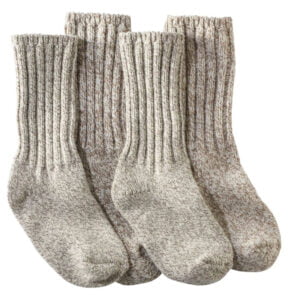
As insignificant as they seem, socks are equally as important as winter boots. A good wool or wool-blend sock will help keep your feet warm on the coldest Winnipeg days. Over the past few years, socks have used the term “thermal” in their marketing, which is still a wool or wool-blend sock in most cases. Wool helps retain heat, even when wet. There are also other “thermal” socks which do not use wool but help keep moisture away. These thermal socks from Mark’s are an example of that. Again, look for sales and coupons, as socks from clothing retailers often go on sale.
Winnipeg winter is quite bearable if dressed appropriately. Down the road, you may find yourself wearing lighter clothes compared to when you first moved here. Your first cold winter WILL be a shock, but your body does become accustomed to it.

